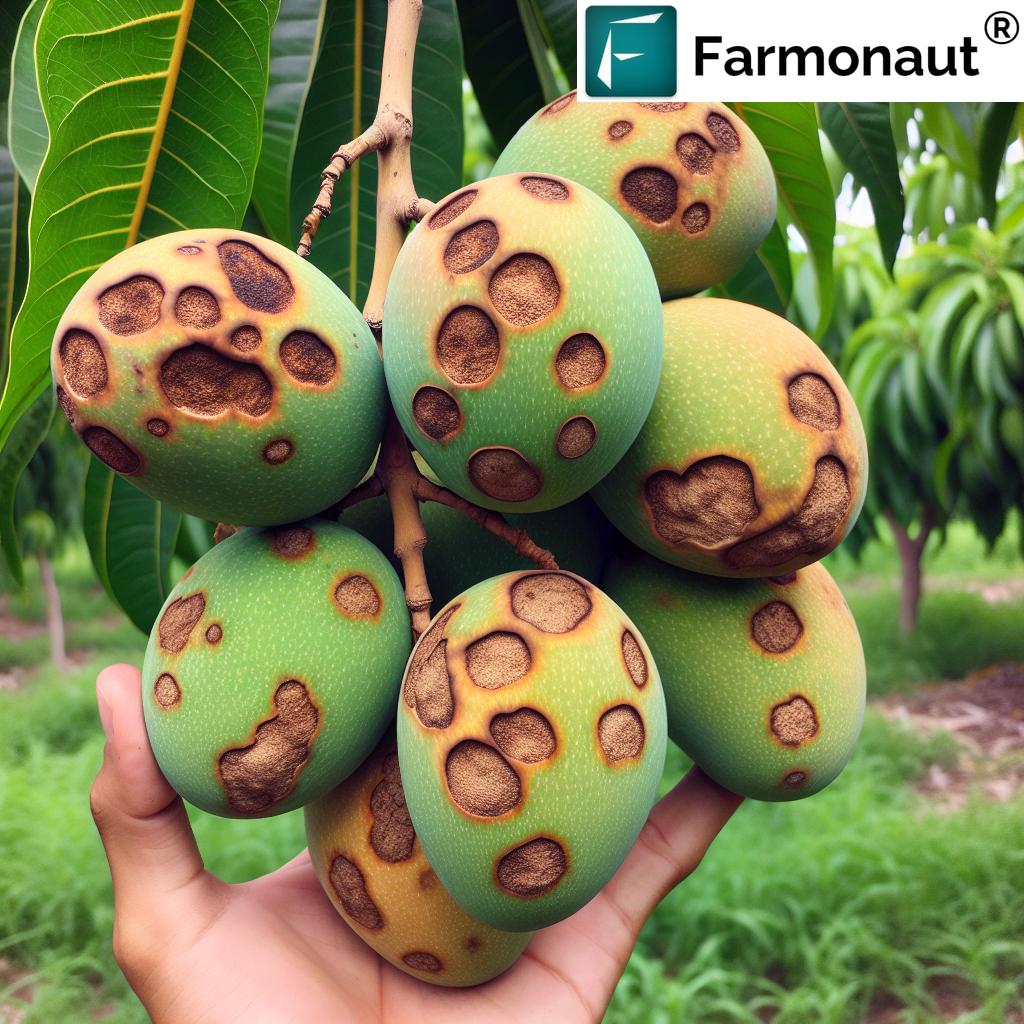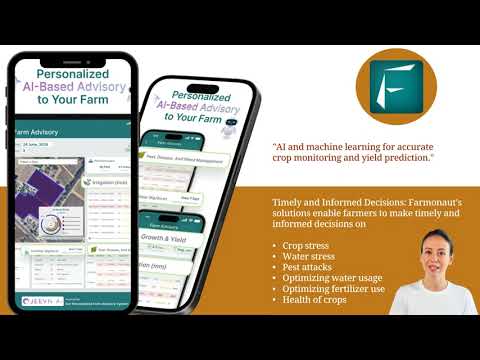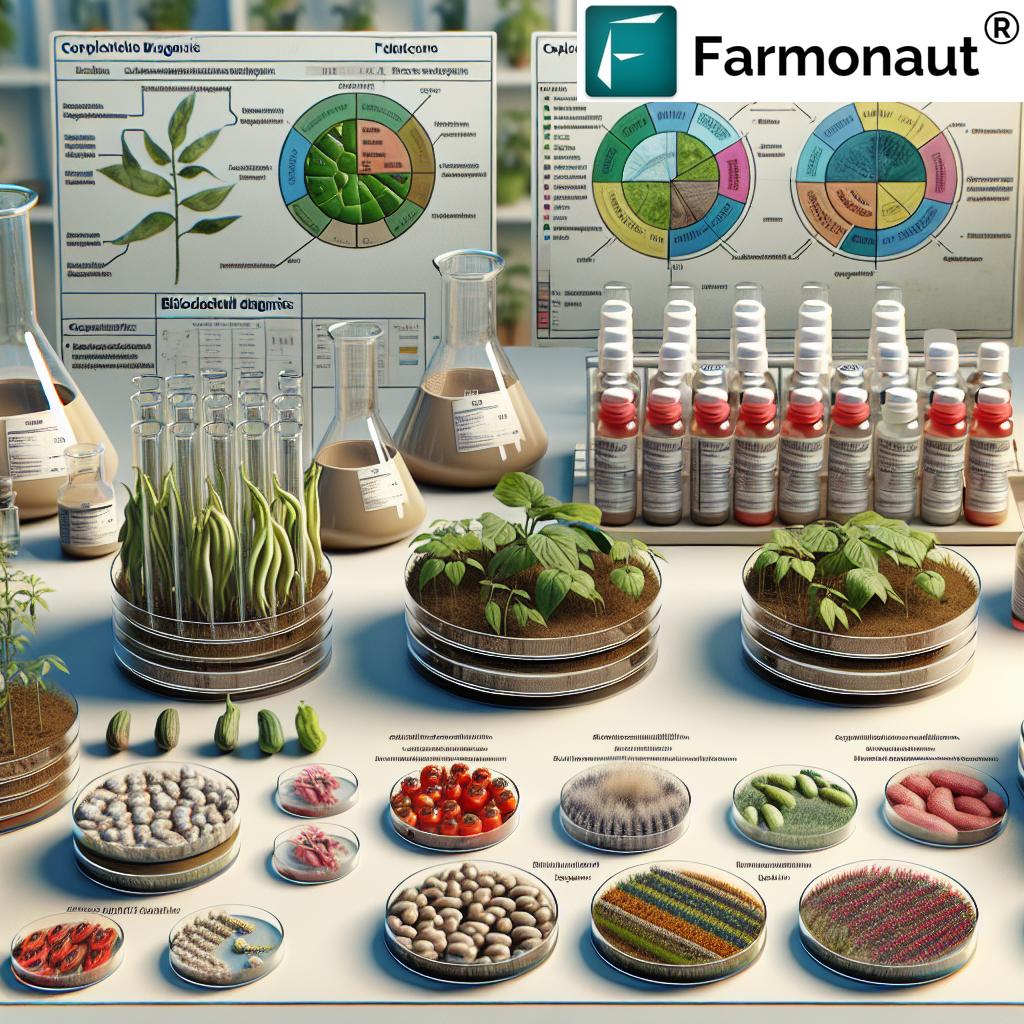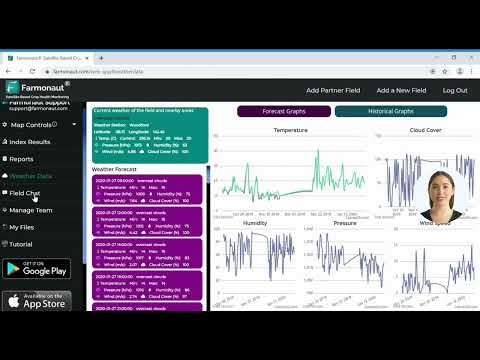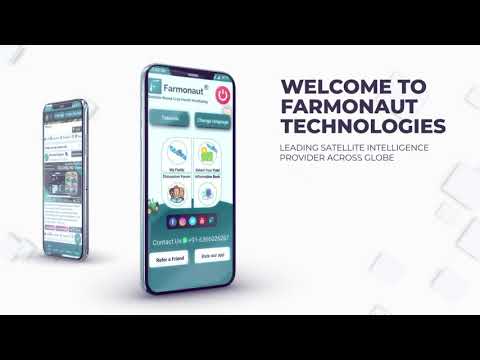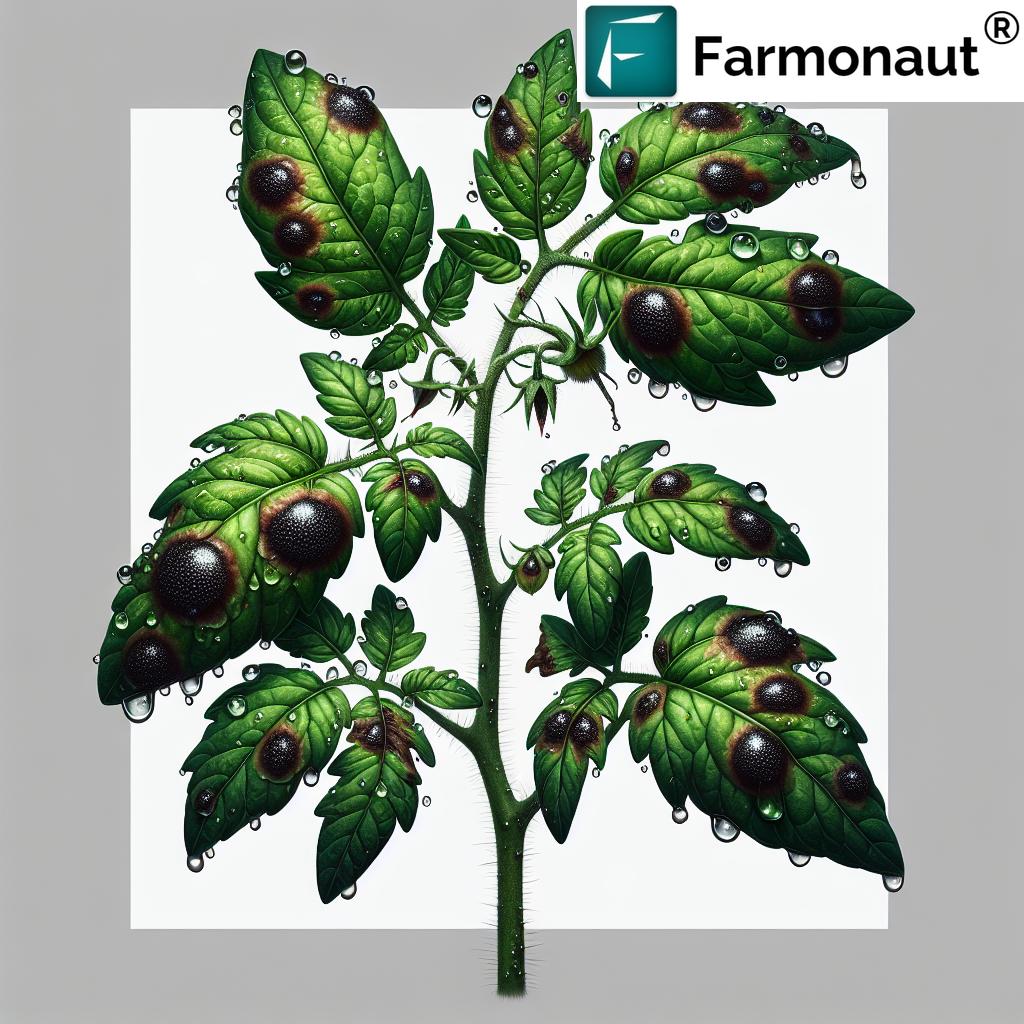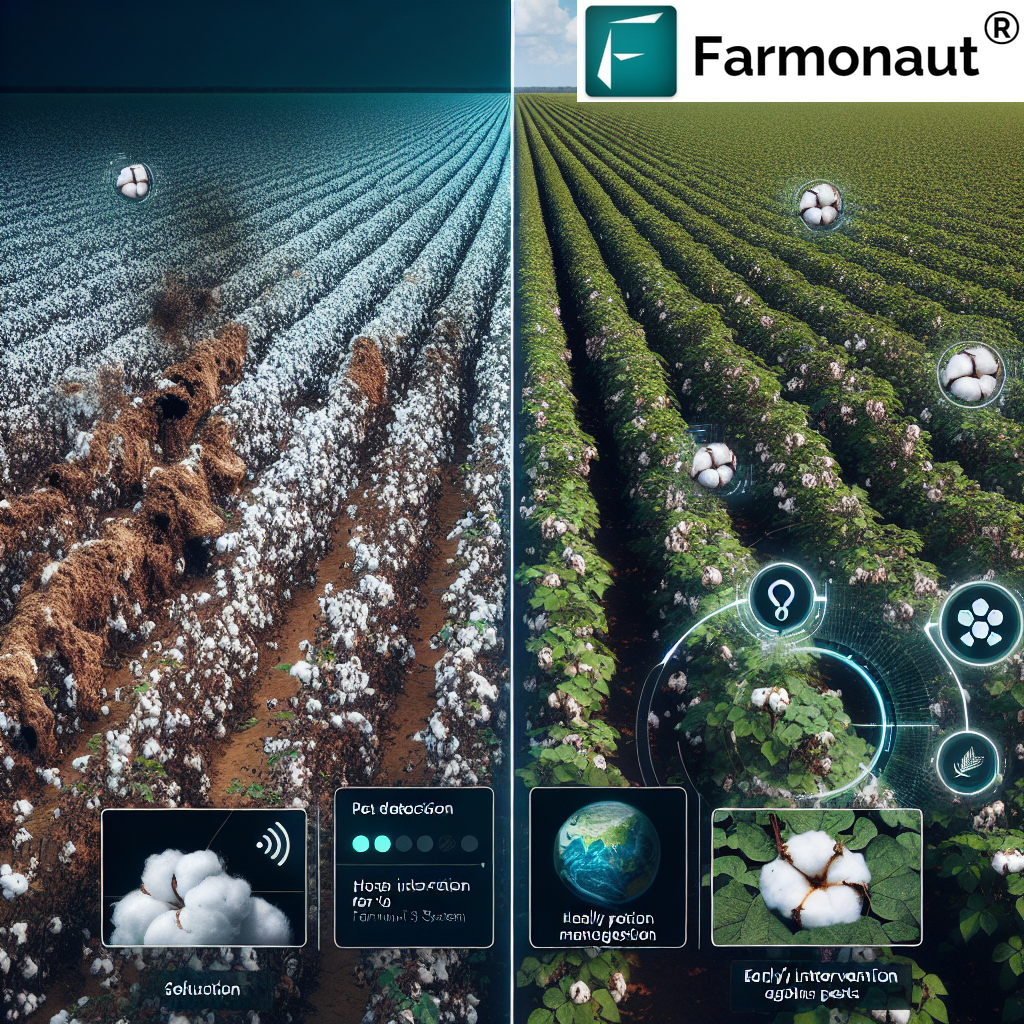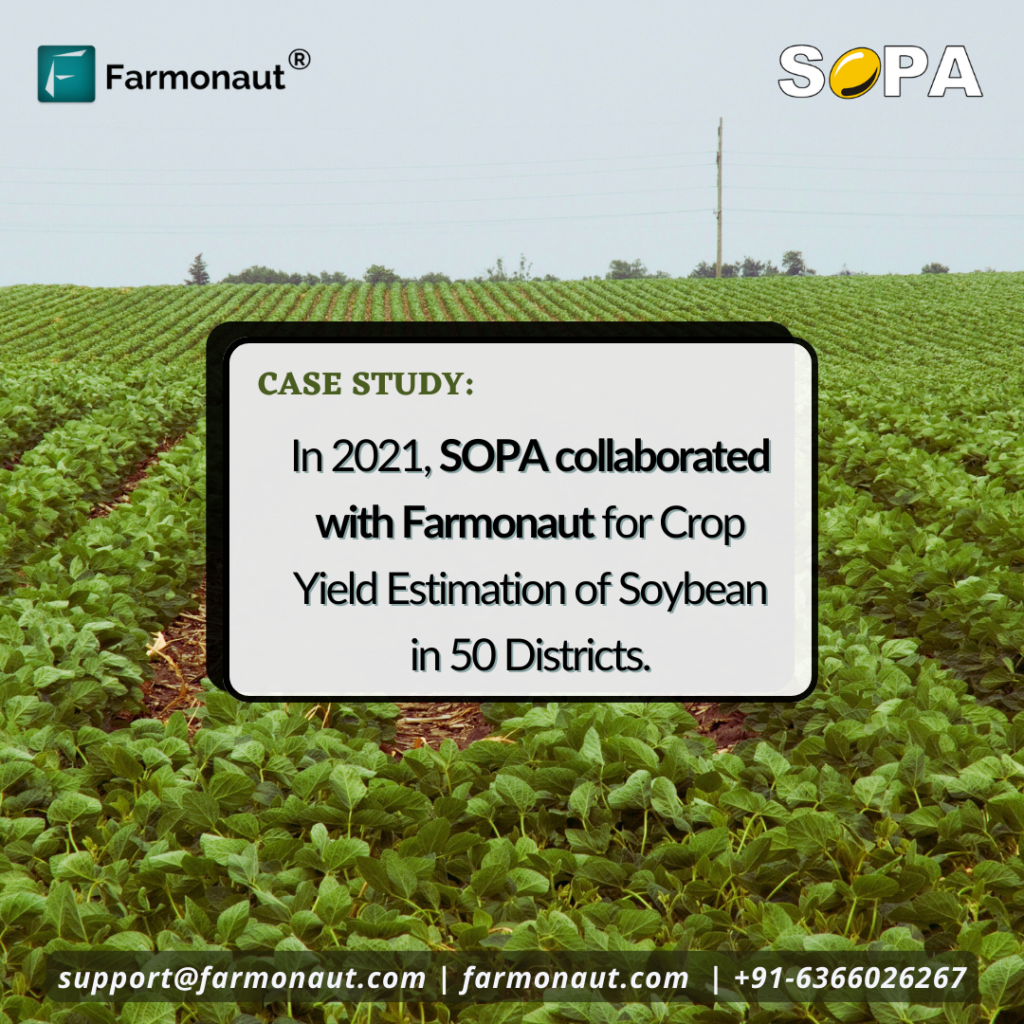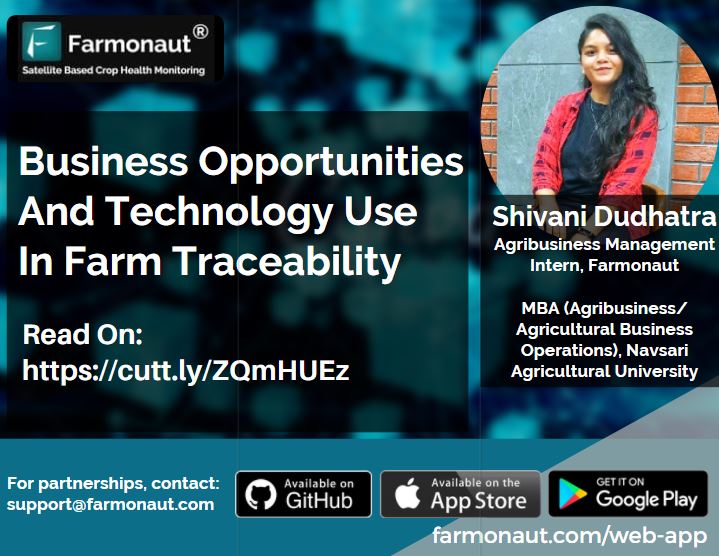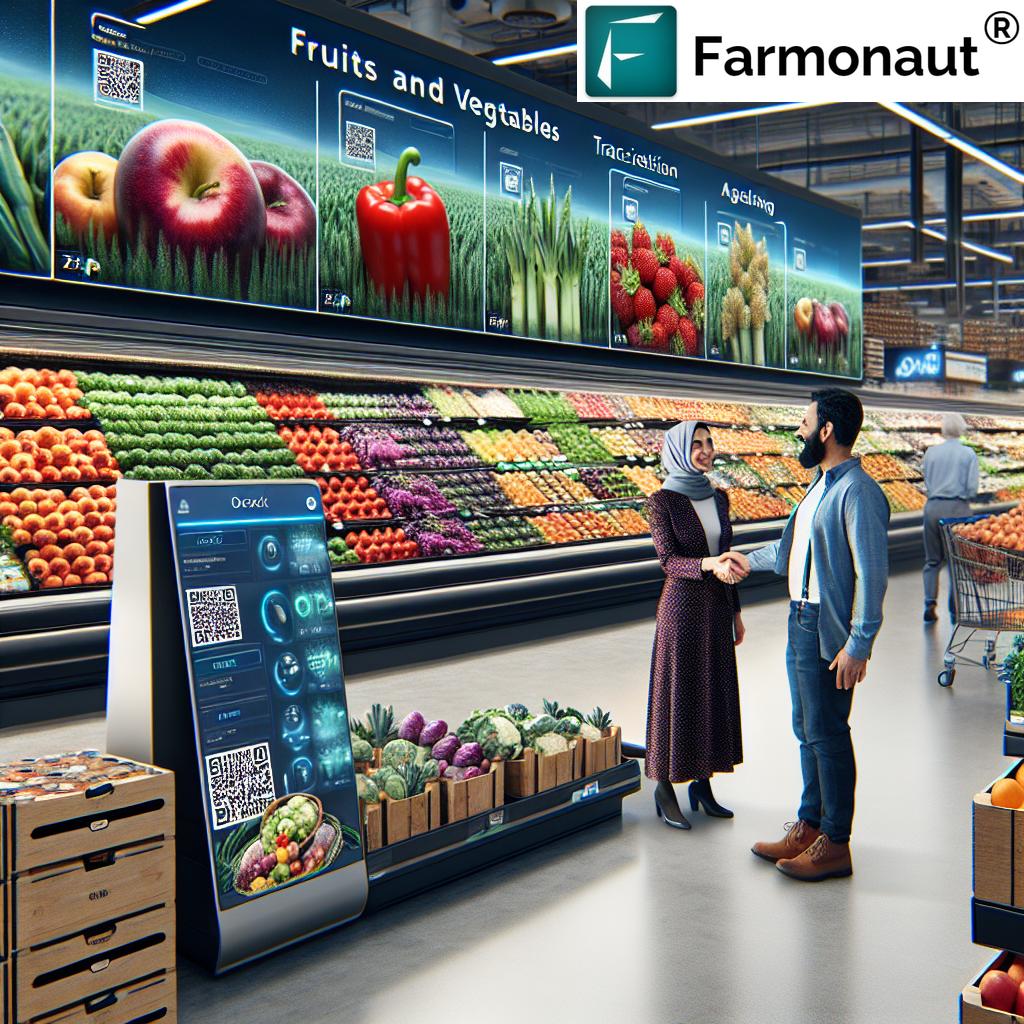Table of Contents
- Introduction: Anthracnose in Crops and Fruits
- Quick Trivia: The Global Impact of Anthracnose
- What is Anthracnose?
- Causes & Pathogens: Colletotrichum Species in Plants
- Anthracnose Symptoms in Crops and Fruits
- Diverse Host Range: Trees, Fruits, Vegetables, and Grains
- Diagnosis: How to Identify Anthracnose Lesions
- Anthracnose Disease Management: 7 Shocking Crop Rescue Secrets
- Symptom vs. Management Strategy Table
- Economic and Agricultural Impact
- Farmonaut: Subscription & Pricing Options
- Frequently Asked Questions (FAQs)
Anthracnose: 7 Shocking Crop Rescue Secrets Revealed!
Primary Focus Keyword: anthracnose
Anthracnose is a notorious fungal disease ravaging plants ranging from staple crops like beans and soybeans to fruits such as mangoes, citrus, strawberries, and vegetables like tomatoes and peppers. Caused by distinct Colletotrichum species in plants, this disease manifests through a range of symptoms, including sunken, dark lesions, necrotic leaf spots, premature leaf drop, and devastating fruit rot. If left unmanaged, anthracnose can result in significant agricultural losses and threaten global food security.
In this guide, we’ll reveal the 7 most shocking crop rescue secrets for anthracnose disease management, providing you with practical, science-backed strategies for detection, integrated control of anthracnose, and long-term prevention. We’ll also showcase how cutting-edge tech, such as Farmonaut’s satellite-based agricultural solutions, is revolutionizing disease management for crop growers and agribusinesses worldwide.
What is Anthracnose?
Anthracnose is a fungal disease group affecting a diverse range of plants and crops worldwide. Characterized by irregularly shaped brown spots, sunken lesions, and severe tissue decay, anthracnose is caused by several species within the Colletotrichum genus. It thrives under warm, moist environments, making crops in tropical, subtropical, and temperate regions particularly vulnerable. Its notorious ability to spread quickly means that prompt and integrated management is crucial to preventing severe yield and quality losses.
At its core, anthracnose isn’t just one disease, but a collective term for various similar-looking infections, all caused by different Colletotrichum species that target specific plants. Whether we are dealing with beans, soybeans, mangoes, citrus or strawberries, the general strategies for anthracnose disease management and integrated control remain grounded in early identification, good cultural practices, judicious use of fungicides, and adoption of technology solutions like Farmonaut for real-time crop health monitoring.
Causes and Pathogens: Colletotrichum Species in Plants
Understanding the Pathogen: Colletotrichum and Other Fungi
Anthracnose is caused by fungi of the Colletotrichum genus. These fungal pathogens are host-specific, meaning different Colletotrichum species infect different plants. Some notable examples include:
- Colletotrichum lindemuthianum: Infects beans, causing angular brown spots, sunken stem lesions, and severe loss in yield.
- Colletotrichum truncatum: Infects soybeans; symptoms usually become visible around plant maturity as sunken stem lesions, seedborne infections, and leaf drop.
- Colletotrichum gloeosporioides: Major threat to fruits like mangoes and citrus.
- Colletotrichum acutatum: Particularly devastating to strawberries and various fruits under warm, moist conditions.
These fungi thrive in environments with:
- High humidity and frequent rains
- Warm temperatures (20-30°C is ideal for rapid development)
- Poor air circulation in dense crops and plantations
Under such conducive conditions, the pathogen rapidly develops, spreads via rain splashes, wind, or contaminated tools, and infects new hosts, often causing significant crop losses.
Want real-time updates on climatic and disease risk conditions for your farm?
Try Farmonaut’s AI-based Advisory and Satellite Monitoring Platform to empower your anthracnose management decisions!
Anthracnose Symptoms in Crops and Fruits
Recognizing anthracnose symptoms in crops is the first step towards timely interventions and effective disease management. Diagnosis is essential given the wide range of manifestations across hosts and environments. Here’s what to look for:
Common Anthracnose Symptoms
- Leaf Symptoms:
- Irregularly shaped, tan to brown spots, often starting along leaf veins.
- Distortion, cupping, or curling of young leaves due to severe tissue damage.
- Premature leaf drop in severe cases, reducing photosynthetic capacity.
- Stem and Twig Lesions:
- Sunken, dark brown, circular or elliptical cankers on stems and twigs.
- Lesions may girdle the stem, causing dieback of branches or parts of the plant.
- Fruit Rot:
- Small, dark sunken spots appear on fruits (e.g. mangoes, peppers, tomatoes, citrus).
- Spots enlarge, often coalesce; the infected tissue turns soft and is rendered inedible.
- Seed Infection:
- Infected seeds show yellow to brown lesions or blotches, have reduced germination rates, and poor quality.
- Defoliation:
- Severe infections cause extensive tissue death and premature defoliation of trees and crops.
Anthracnose in Mangoes and Citrus Fruits: A Closer Look
In mangoes, anthracnose symptoms start as small, brown, sunken lesions on young leaves and fruit, eventually expanding and causing fruit rot, especially during humid ripening periods. Citrus fruits may develop dark, circular spots, often with concentric rings, leading to blemished, inedible fruit.
For a more visual understanding, refer to the following illustration:
Visual Guide: How to Identify Anthracnose Lesions
- Leaf: Angular reddish-brown to tan lesions, usually along the veins, may show dark margins.
- Stem: Circular or elliptical, dark brown sunken lesions (advanced stages may girdle stems).
- Fruit: Reddish-brown to black, slightly sunken, circular spots that enlarge and turn dark with age.
Need technology for precise symptom monitoring? Farmonaut’s satellite-based crop health mapping provides early warnings and lets you track health changes across vast fields—see large-scale farm management to learn more!
Diverse Host Range – Which Crops and Plants Get Anthracnose?
Anthracnose is notoriously widespread. It can infect a range of over 50 crop and fruit varieties across different climate zones. Major hosts include:
- Trees: Sycamore, oak, maple, ash, elm
- Vegetables: Beans, tomatoes, peppers, cucurbits (cucumber, squash, melons)
- Fruits: Mangoes, strawberries, citrus, bananas
- Grains: Corn, sorghum, oats
- Ornamental plants: Roses, dogwoods, azaleas
The fact that one family of fungi can target such a wide host range further underscores the importance of integrated disease management strategies and real-time monitoring across fields, orchards, and plantations.
Diagnosis: How to Identify Anthracnose Lesions
Accurate diagnosis is crucial for successful anthracnose disease management. While field observations allow preliminary identification, lab confirmation is often required to distinguish from other fungal diseases in fruits and vegetables. Here’s how we recommend proceeding:
- Field Inspection: Observe for angular spots on leaves, sunken lesions on stems and fruits, greyish or reddish centers with dark margins.
- Lab Testing:
- Fungal culturing on selective media to isolate Colletotrichum species
- Molecular methods (PCR, DNA sequencing) for species-level confirmation
- AI-driven Digital Diagnosis: Modern farm management apps like Farmonaut allow us to monitor plant health indices and spot stressed zones likely affected by anthracnose from space. This drastically speeds up detection for large-scale operations and reduces yield losses.
Farmonaut traceability solutions can help food supply chain businesses trace produce batches back to the field of origin, enhancing transparency and food safety for retailers facing disease outbreaks.
Anthracnose Disease Management: 7 Shocking Crop Rescue Secrets
Overcoming anthracnose in agricultural crops demands an integrated approach, combining cultural, biological, and chemical control methods. Below are our top 7 proven, practical, and sometimes overlooked strategies:
1. Cultural Control
- Start with Disease-Free Seed and Planting Material
Always use certified, anthracnose-free seeds or seedlings. Infected seeds are a major source of primary infection and poor seed quality leads to poor stand establishment. - Crop Rotation
- Rotate with non-host crops (e.g., cereals after beans)
- Minimum of 2–3 years is recommended to reduce residual inoculum in soil
- Sanitation
Remove and destroy infected plant debris after harvest to prevent pathogen carryover. This is crucial in fields with historic anthracnose outbreaks. - Irrigation Management
- Use drip or trickle irrigation to keep leaves dry (avoid overhead watering).
- Water early in the day to allow foliage to dry quickly.
- Pruning, Thinning, and Canopy Management
Prune out infected twigs, ensure good air circulation by thinning interiors—this reduces the humidity and leaf wetness critical for fungal growth.
2. Biological Control of Anthracnose
As part of integrated control of anthracnose, biological options are increasingly favored for sustainability and resistance prevention:
- Bacillus subtilis: Certain strains suppress anthracnose severity when applied as foliar sprays or seed coating.
- Trichoderma harzianum: A beneficial fungus that’s antagonistic to Colletotrichum, can be drenched or applied to soils to protect plants.
Tip: Regular application at key crop stages can reduce reliance on chemical fungicides and maintain soil health.
3. Chemical Control: Fungicides for Anthracnose
- Fungicide Selection: Use products labeled for anthracnose containing actives like:
- Chlorothalonil
- Thiophanate-methyl
- Propiconazole
- Copper-based compounds
- Application Timing and Resistance Management:
- Apply preventatively, especially prior to or at first sign of symptoms (bud swelling, early fruit set).
- Repeat every 10–14 days during periods of frequent rain and high humidity.
- Rotate fungicides with different modes of action to prevent development of resistant pathogen strains.
- Always follow local label instructions and pre-harvest intervals!
4. Integrated Management Strategies
- Combine cultural, chemical, and biological agents for best results—this is especially crucial for high-value crops like mangoes, citrus, and strawberries where losses can be catastrophic.
- Monitor fields regularly using technology to guide fungicide/biocontrol sprays, optimize rotation planning, and minimize resource inputs.
Farmonaut’s AI Advisory and carbon foot-printing tools also help optimize agricultural inputs and reduce the environmental impact of chemical applications—vital for sustainable farming!
5. Tech Empowerment: Farmonaut Solutions for Crop and Disease Management
Farmonaut is at the forefront of precision agriculture using satellite-based monitoring, AI-powered advisories, and blockchain-based traceability. Here’s how these tools directly enhance anthracnose control:
- Satellite Crop Health Monitoring: Quickly spot stressed, infected zones before symptoms are visible to the naked eye. Intervene precisely, reducing waste and disease spread.
- Personalized AI Advisory (Jeevn AI): Receives automated, real-time guidance for preventing and tackling anthracnose outbreaks using weather, crop, and infestation data.
- Blockchain-Based Product Traceability: Connect every crop, batch, and field entry. If a harvest faces disease, swiftly track and recall—protecting your supply chain and market reputation. Learn more: Traceability Solutions.
Ready for digital field management? Explore Farmonaut’s Large-Scale Farm Management App.
6. Farmonaut: Easy Mobile & API Access for Every Grower
- Access Farmonaut from Android, iOS, or browser using this link.
- Integrate real-time satellite crop, weather, and disease data into your own apps or systems via the Farmonaut API. Developer documentation is here.
- Optimize fleet management for agribusinesses: Farmonaut Fleet Management Tools automate vehicle tracking and reduce logistics waste for disease-affected crops and plantations.
- Smart resource management also aids insurance claims/loans. Learn more: Crop Loan & Insurance Verification.
7. Future Directions: Resistant Cultivars, Digital Agriculture, and Sustainability
- Development of resistant cultivars: Breeding for anthracnose-resistant varieties is an evolving field, promising long-term, low-input solutions.
- Improved forecasting models: Digital platforms will soon integrate climate, spore, and satellite data to create outbreak prediction tools for proactive management—Farmonaut is leading the way for farmers at all scales!
- Sustainable, eco-friendly options: Biocontrol innovations, resource optimization, and carbon footprint tracking will be mainstream in coming years—see Farmonaut’s carbon management programs to jumpstart your sustainability journey.
Symptom vs. Management Strategy Table (At a Glance)
| Symptom | Affected Crop/Plant | Estimated Yield Loss (%) | Colletotrichum Species Involved | Recommended Integrated Management Strategy |
|---|---|---|---|---|
| Irregular brown leaf spots, distortion, defoliation | Beans, sycamore, oak | 10–30% | C. lindemuthianum | Disease-free seed, crop rotation, preventive fungicide sprays, good irrigation management |
| Sunken stem and pod lesions, seed infection | Soybeans | 12–40% | C. truncatum | Crop rotation, remove debris, apply biocontrol (Trichoderma), foliar fungicides at pod-fill |
| Dark, circular to irregular sunken fruit spots | Mangoes, citrus | 15–80% | C. gloeosporioides | Sanitation, canopy thinning, timed copper fungicide sprays, post-harvest hot water treatment |
| Small sunken spots merging on fruit and leaves | Strawberries, peppers, tomatoes | 8–40% | C. acutatum | Certified transplants, drip irrigation, remove infected material, early and repeated fungicide/biocontrol sprays |
| Dark, sunken leaf and stem cankers, branch dieback | Trees – maple, ash, elm | Up to 35% | Colletotrichum spp. | Prune infected twigs, proper spacing, apply copper-based fungicides at bud-break |
Economic and Agricultural Impact of Anthracnose
Anthracnose causes crippling yield and quality losses in both subsistence and commercial agriculture. Direct impacts include:
- Lower marketable yields from fruit rot, premature defoliation, and seed spoilage
- Higher production costs due to increased need for fungicides, labor, and crop inputs
- Reduced crop quality, which affects export, market prices, and farmer incomes
- Resource and environmental impact, as repeated chemical usage is neither sustainable nor always effective
Sustainable management (as enabled by Farmonaut’s data solutions) is crucial not just for reducing annual losses but for:
- Maintaining long-term farm profitability
- Protecting the land and food resources for future generations
- Improving access to fair finance and insurance using transparent data (see crop loan and insurance)
Farmonaut: Subscription & Pricing Options
Want a cost-effective way to monitor crop health, manage disease, and boost yields? Farmonaut’s subscription platform integrates satellite, AI, and data-driven insights into your farm operations—without expensive equipment. Plans are available for individuals, cooperatives, and agribusinesses, with APIs for custom needs. Check latest plans below or start for free on the app:
Frequently Asked Questions (FAQs)
What is anthracnose and what causes it?
Anthracnose is a group of fungal plant diseases caused primarily by Colletotrichum species. These pathogens produce characteristic brown, sunken lesions on leaves, stems, fruits, and seeds, resulting in yield and quality losses in a diverse range of crops and fruits.
How can I identify anthracnose lesions in my crops?
Typical signs include irregular, tan to brown spots on young leaves, sunken circular or elliptical lesions on stems or fruits, and defoliation in severe cases. For accurate confirmation, lab testing or AI-powered crop monitoring services (like Farmonaut) are recommended.
Which crops are most vulnerable to anthracnose?
Beans, soybeans, mangoes, citrus fruits, strawberries, tomatoes, peppers, cucurbits, and many trees (maple, ash, elm) are especially susceptible. The host range is wide—over 50 major food and fruit crops can be affected.
What are the most effective ways to manage anthracnose?
Integrated management is key: Start with disease-free planting material, rotate crops, practice field sanitation, and use irrigation wisely. Combine regular fungicide applications (e.g. copper, propiconazole) with biological control agents (e.g. Trichoderma, Bacillus subtilis), and monitor fields with satellite/A.I. for early detection.
Is chemical control alone sustainable for anthracnose?
No. Overuse of fungicides leads to resistance in pathogen strains and environmental concerns. Integrated management (combining cultural, biological, and chemical strategies) can reduce crop losses by up to 60% and supports sustainable agriculture.
How can digital agriculture tools help in anthracnose management?
Farmonaut offers satellite-based crop health monitoring, AI-powered disease risk advisories, and blockchain traceability for rapid outbreak response. These tech solutions let farmers detect problems early, direct interventions precisely, and limit resources wasted on non-infected areas.
Can I integrate Farmonaut in my business’s own app or ERP?
Absolutely! Farmonaut provides an API and robust developer documentation for custom integration of satellite imagery, weather, and crop health data.
Where can I download the Farmonaut app?
Conclusion: Beating Anthracnose with Smart, Integrated Solutions
Anthracnose is a widespread, destructive fungal disease capable of causing significant agricultural losses. Yet with knowledge, vigilance, and the integration of modern monitoring—such as Farmonaut’s satellite-driven, AI-powered tools—we can empower both smallholder farmers and large agribusinesses to defeat anthracnose in crops, fruits, and across the agricultural landscape.
By combining timely diagnosis, cultural, biological, and chemical controls, and leveraging Farmonaut for real-time advice and traceability, we put resilient, sustainable farming within everyone’s reach—protecting productivity, profit, and the food security of our communities.


